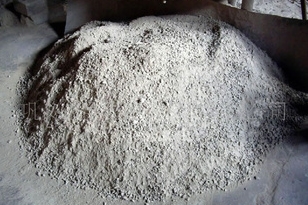- 22
- Dec
magnesia-alumina spinel
Magnesia-alumina spinel (magnesia-alumina spinel) refers to the artificially synthesized spinel refractory raw material using magnesium oxide and aluminum oxide as raw materials. The raw material is rarely found in nature, and the industrial magnesia-aluminum spinel is all artificially synthesized. Bauxite-based sintered magnesia-aluminum spinel is made of high-quality bauxite with an Al2O3 content of more than 76% and high-quality light-burned magnesia powder with a MgO content of more than 95%. Sintered at the above high temperature.
тааныштыруу
Bauxite-based sintered magnesia-aluminum spinel is made of high-quality bauxite with an Al2O3 content of more than 76% and high-quality light-burned magnesia powder with a MgO content of more than 95%. The above high temperature sintering [1].
The characteristics of aluminum-magnesium spinel
Bauxite-based sintered magnesia-aluminum spinel is made of high-quality bauxite with an Al2O3 content of more than 76% and high-quality light-burned magnesia powder with a MgO content of more than 95%. It is sintered at high temperature, with high bulk density, high mineral phase content, well-developed crystal grains, uniform structure and stable quality. Magnesium-aluminum spinel has good corrosion resistance, strong corrosion and spalling ability, good slag resistance, abrasion resistance, thermal shock stability, high temperature resistance and other performance characteristics. It is an ideal raw material for the production of refractory products such as magnesia-aluminum spinel bricks for high-temperature zones of cement rotary kilns, ladle lining bricks, and ladle castables. Magnesium-aluminum spinel is widely used in refractory materials, steel smelting, cement rotary kilns and glass industrial kilns[2].
Application of Al-Mg Spinel
It has good corrosion resistance, abrasion resistance and good thermal shock stability. Its main uses: First, to replace magnesia chrome sand to make magnesia-aluminum spinel bricks for cement rotary kilns, which not only avoids chromium pollution, but also has good spalling resistance; second, it is used to make ladle castables, greatly improving The corrosion resistance of the steel plate lining. It is widely used in refractory materials for steelmaking. The production of high-quality pre-synthetic spinel provides new raw materials for the production of unshaped and shaped high-purity refractories[2].
resolve resolution
There are two kinds of electric melting method and sintering method. The electrofusion synthesis method uses industrial alumina or high-purity bauxite and light-burned magnesia (containing natural or sea (brine) water-borne magnesium) in proportion, and is melted at a high temperature of about 2200 ℃ in an electric arc furnace. The sintering method is to use the above-mentioned raw material ratio, after grinding, mixing, balling, and calcining in a rotary kiln or shaft kiln at a high temperature above 1800℃. In some bricks, industrial alumina or high After the purity bauxite clinker is ground, it is added or jointly ground, mixed, and shaped according to the ingredients requirements, and then fired at a high temperature to produce magnesia-aluminum spinel bricks, which are mostly used in open-hearth furnace tops and other parts.

